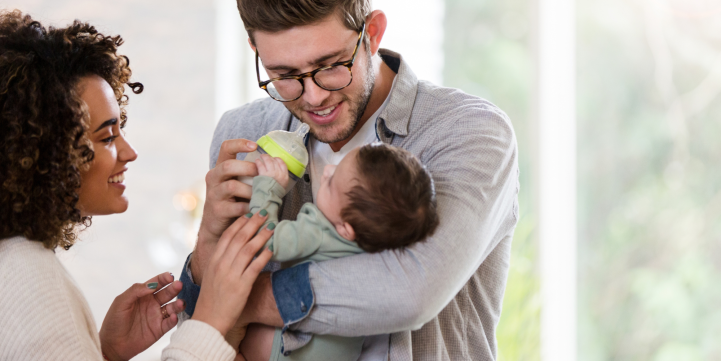
Life changes when a baby arrives, and it can be hard for new parents to feel prepared to navigate it all. Most expecting parents feel less than completely prepared to use cleaning products properly and safely around a new baby. The Clean First Steps: A Guide for New Parents toolkit is designed to provide guidance on the cleaning and hygiene best practices that can help keep babies and young children safe and healthy. Explore the different elements of the toolkit below.
Diaper Change Routine Checklist
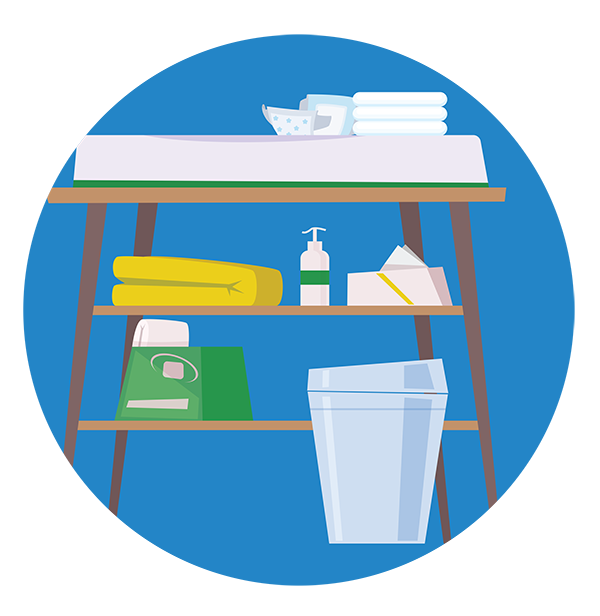
Step One
- Have a designated bin for supplies and remember to wash hands before.
- Once you have everything you need, safely place your baby on the diapering surface.
- Recommend washing hands before and after and to keep hand sanitizer in their changing area for easy hand cleaning.
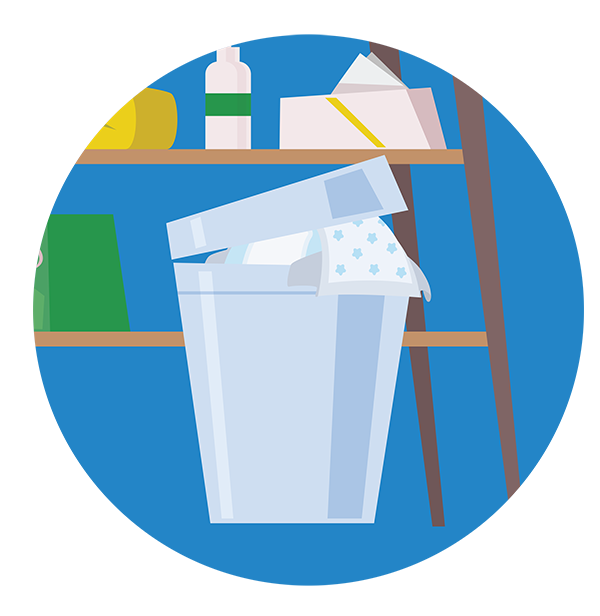
Step Two
- After the diaper is changed and the baby is in a safe space, discard soiled diaper and wipes into a trash can.
- Keep dirty wipes/dirty diapers in an area that is separate from the clean wipes/clean diapers to reduce risk of cross contamination.
- Recommend washing hands before and after and to keep hand sanitizer in their changing area for easy hand cleaning.
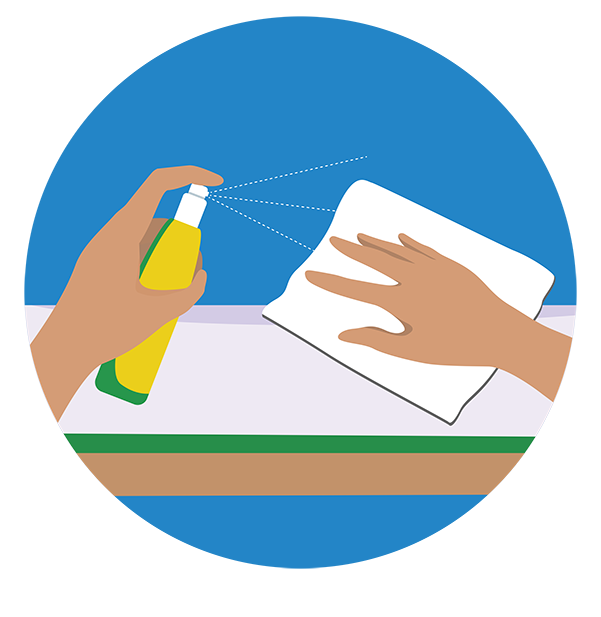
Step Three
- Wipe away any visible soil with a damp paper towel or baby wipe, then wet the entire surface with disinfectant, making sure you read the label first to use properly.
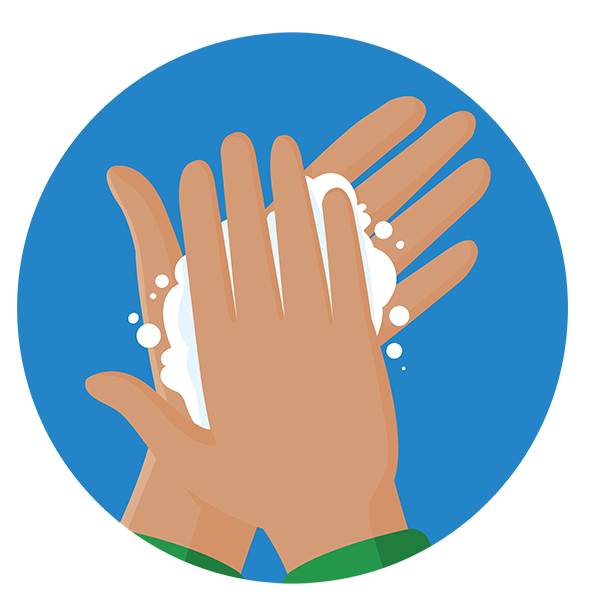
Step Four
- Wash your hands thoroughly with soap and water.
- Wipe/clean/disinfect the surfaces of any of the items/containers they touched during the changing process along with the direct changing surface.

Clean Bottle Guide
How to Wash a Baby Bottle
First:
- Wash your hands with soap and water for 20 seconds
- Separate all bottle parts
- Rinse bottle parts
Then:

- Place bottle parts in the dishwasher. (Place small items inside a closed-top basket or mesh laundry bag so they don’t end up in the dishwasher filter.) If possible, run the dishwasher using hot water and a heated drying cycle (or sanitizing setting).
- Wash your hands with soap and water before removing and storing cleaned items. Do not use a dish towel to rub or pat items dry because doing so may transfer germs to the items.

- Wash Baby Bottle
- Place all items in a clean basin or container used only to clean infant feeding items. Do not wash directly in the sink because the sink may contain germs.
- Fill wash basin with hot water and add soap.
- Scrub items using a clean brush that is used only to clean infant feeding items.
- Squeeze water through nipple holes to be sure they get clean.
- Rinse items under running water, or by holding completely under fresh water in a separate basin that is used only for cleaning infant feeding items.
- Place bottle parts in an area to protect from dirt and dust and allow to dry thoroughly. Do not use a dish towel to rub or pat items dry.
How to Sanitize a Baby Bottle
If your baby is less than 2 months old, was born prematurely, or has a weakened immune system, daily sanitizing is particularly important. Before sanitizing, make sure you have cleaned the baby bottle using one of the methods above. Sanitize all items by using one of the following options:
- Boil: Place disassembled feeding items into a pot and cover with water. Put the pot over heat and bring to a boil. Boil for 5 minutes. Remove items with clean tongs.
- Bleach
- Prepare a bleach solution of 2 teaspoons of unscented bleach per gallon (16 cups) of water in a clean wash basin.
- Put all items completely underwater. Squeeze the solution through nipple holes.
- Soak items in the solution for at least 2 minutes.
- Remove with clean hands or tongs.
- Do not rinse because germs could get back onto the sanitized items. Any remaining bleach will break down quickly as it dries and will not hurt your baby.
- Steam: Place disassembled items in a microwave or plug-in steam system and follow the manufacturer’s instructions for sanitizing, cooling, and drying the items.
Newborn Laundry Guide
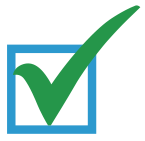 |
Follow the instructions on your laundry detergent. Use it safely and in the recommended amounts. More isn’t necessarily better. If your baby has delicate skin, choose a gentle or specially formulated detergent to suit their needs.
|
 |
Wash baby clothes separately.* This is a good idea to prevent germs or bacteria from spreading. If someone in the home is sick, you want to take additional precautions with the non-baby laundry loads, including using a warmer water temperature, considering adding EPA registered laundry sanitizer or bleach, and washing your hands after handling.
|
 |
Sort laundry by like colors and soil levels for best results, following the fabric care labels on the baby’s clothes.
|
 |
Treat stains immediately. It helps to know exactly what type of stain it is for your best chance at removal.
|
 |
Store products safely. Keep all laundry products up and away, in their original container with labels intact. Always ensure the container is tightly sealed after use. If you think your baby has been exposed to a cleaning product, call your local poison control center at 1-800-222-1222 immediately. |
* Remember, you should also wash baby clothes when you first buy or receive them because there could be harmful bacteria and germs on the fabric.
Baby Stain Guide
Baby Oil
- Soak up what you can with a paper towel.
- Pretreat with prewash stain remover or laundry detergent.
- Launder (Using hottest water safe for fabric).
Breast Milk, Formula or Spit Up
- Pretreat or soak stains using a stain remover product containing enzymes.
- PSoak for at least 30 minutes or several hours for aged stains.
- Launder.
Pool (Because blowouts happen)
- Use a baby wipe to remove what you can.
- Rinse in cold water with dish soap.
- Launder.
Do not put clothing in the dryer until the stain is fully gone, as this may set the stain.
Diaper Duty
Washing cloth diapers at home is a separate cleaning process. The manufacturer will have more specific instructions on how to launder their diapers to keep them clean and help them last longer.
Prep – Remove any solid waste and use a diaper sprayer for the rest. Store in a diaper pail or bag until you’re ready to launder.
Wash – Plan to do a load of diaper laundry at least every other day. Start with a rinse cycle, then wash according to the fabric care instructions.
Dry – Air dry cloth diapers to help them last longer and maintain their waterproofing. Do not put away until fully dry.
Cleaning Safety Do's and Don'ts
When it comes to your everyday cleaning routine, it’s important to remember and prioritize safe storage. Creating proper storage habits from the moment you bring your baby home will help you avoid accidents as your child grows up and begins exploring. Always store cleaning products up and out of reach, in their original containers. Read more about cleaning product safety.
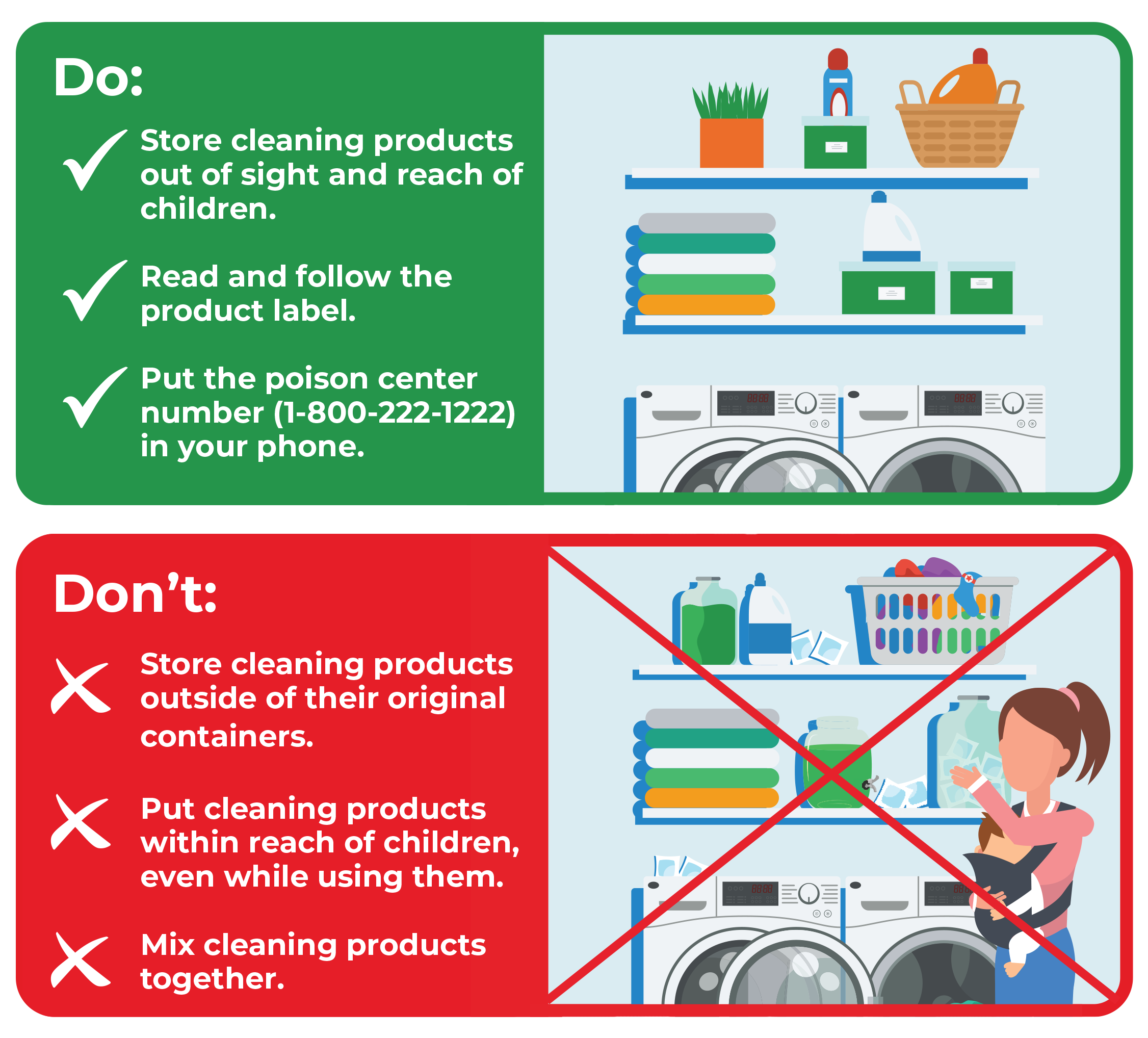
Cleaning and Disinfecting for a Healthy Home
Adjusting Your Cleaning Routine
Regular routine:
- Regularly clean frequently touched surfaces like doorknobs, electronics, faucets, countertops and toys.
- Wipe down the kitchen at least once a week, cleaning the fridge, microwave and floors.
- Always wash hands after cleaning, especially after tasks like changing a diaper or taking out the trash.
- Do laundry at least once a week, or every other day if washing diapers.
- Regularly clean the baby highchair after each meal.
Cleaning when the baby is sick:
- Disinfect frequently-touched surfaces regularly.
- Once the baby feels better, wash or disinfect all the toys they may have touched while they were sick.
- Always wash hands after cleaning, especially after tasks like changing a diaper or taking out the trash.
- Have the whole household wash their hands more frequently, following proper handwashing practices.
- Have hand sanitizer readily available for when washing with soap and water is not possible.
- Take extra steps when laundering the sick baby’s clothes, blankets, and crib bedding by washing with a deeper cleaning detergent and washing and drying on hot.
How to Clean, Sanitize and Disinfect Toys
For toys with a porous surface, like teddy bears:
- Make sure the item is machine washable.
- Put the toy in a mesh laundry bag or pillowcase that is tightly secured at the top.
- Launder on the delicate cycle, using cold water and regular detergent or laundry sanitizer.
- Keep in the mesh bag or pillowcase and dry on a low setting.
For toys with plastic or hard surfaces:
- Remove any dirt or soil by washing with soap and water.
- Sanitize or disinfect with EPA registered products, always reading the label to ensure proper use of the disinfectant.
- Let the disinfectant dry, then rinse toys before returning them to the baby.
- Toys that can be put in the mouth should be sanitized and rinsed between uses.
- Frequently disinfect play spaces.
Know the difference between cleaning, sanitizing, and disinfecting, as well as proper disinfecting techniques.